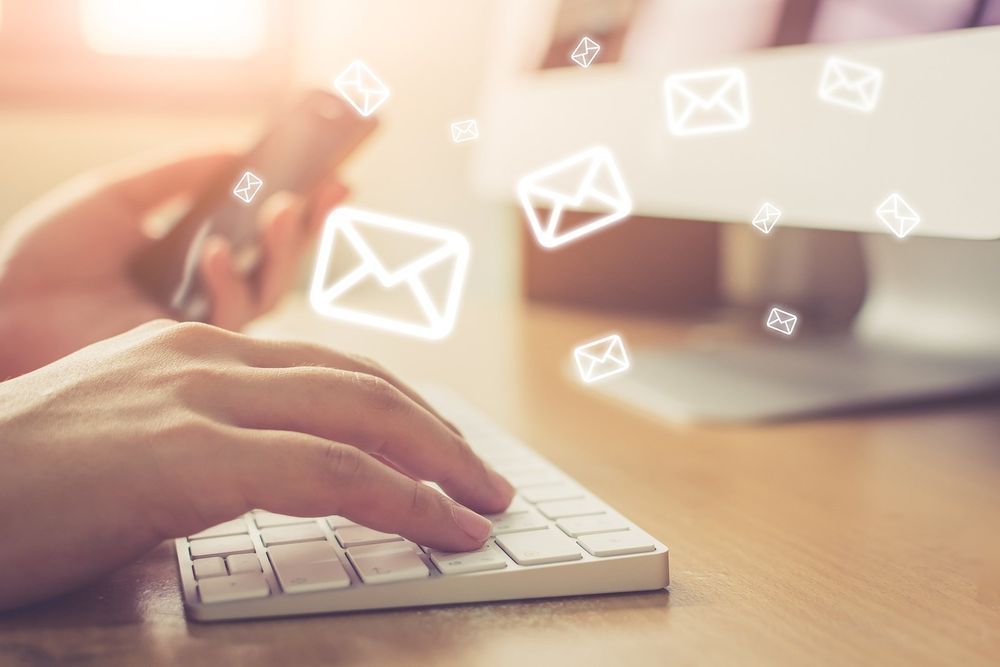
Email marketing is one of those tactics that can produce impressive results when done right, and can hurt your brand's reputation when done wrong. Send a helpful, targeted message and you just might have a customer for life; send a misdirected blast and you could see your unsubscribe rate skyrocket.
It's not hard to see why this is the case. Just look at your own inbox and, if you dare, your spam folder. There are a lot of people trying to reach you through email, some with dubious intentions and others with a self-serving purpose. Don't be one of those senders.
The problem with most email marketing is that messages are sent purely to build awareness or make an announcement, which is unappealing to recipients who receive several such messages every hour.
Statistics vary by industry but, according to research from MailChimp, the average email marketer can expect about a 20 percent open rate and a 2 to 3 percent click rate. Those are bleak numbers if you're pouring resources into email.
Marketers need to think about what their recipients want to hear, rather than filling an email with what they want their readers to know. By coming up with a solid email marketing strategy, you will be able to increase click-throughs and conversions. It's tough because this will not be the same across your entire email list, so you may want to start by breaking it down with segmentation.
Send Relevant Information with Segmenting
MailChimp also found that segmented, targeted emails achieve a 14.31 percent higher open rate and a 100.95 percent higher click rate. How you segment your email list depends on your goals, but it's common to divide people into buckets based on their:
-
Stage in the funnel
-
Industry
-
Actions or purchases on your site
To segment by stage in your sales funnel, you'll need data on the touch points where each user has already engaged. For instance, users who have landed on your site and submitted their information through a form could constitute one segment, while those who have spoken to sales constitute another. This kind of segmentation relies on coordination from your tech team that sets up lead forms and triggers, and your sales team that manually updates contacts in your customer relationship management (CRM) system. (Note: It is very helpful if your CRM integrates with your email platform.)
Segmenting by industry requires that recipients give you this information (via low-friction lead forms, surveys or outreach). But once you cull that information, you can send messages that speak directly to the pain points of each industry and recommend specific products or solutions.
When segmenting based on action, you'll want to create tailored workflows based on what people are clicking on your site. For example, if someone gives you their email in exchange for a white paper on the best practices of brick laying, you can create a drip campaign that further helps recipients with their presumed goal of laying brick.
The goal of segmenting your email list is to send information that seems curated for the recipient, so take it a step further and get personal.
Personalize for Better Engagement
Personalized emails are more likely to be opened than those that have not used personalization. If you have a sizable list, this could mean a significant increase in email-driven traffic.
A simple way to personalize your email is to use dynamic content blocks to pull recipients' names in the subject line or body of an email. You can also personalize messages using location, other demographic information or by specifically mentioning a purchase or piece of content the user has completed or read.
The psychological effects of personalization are twofold, according to HubSpot: When a person sees content that is personalized to their interest, it makes them feel both in control of what they're viewing and helps diminish the information overload people often experience online. Personalization delivers content that's wrapped like a gift, tailored to the person receiving it.
Subject Line and CTA
The subject line and call to action (CTA) of your email are the first and last things your recipients see, respectively. As such, they should directly relate to each other. Your subject line makes a promise and your CTA fulfills it.
Your subject line needs to directly address the value you're offering to recipients. It should answer the questions, "Why should I click on this? What will you give me for my time?" Be funny, shocking or even controversial if that suits your brand, but above all else, provide value.
Your CTA should follow up on this, offering recipients an easy and precise way to opt into what you're offering. Avoid cluttering your email with more than one main CTA, and keep links to a minimum to avoid ending up in spam folders.
Timing is Everything
After all is said and done, be sure to send your messages at a time when they're most likely to be read to ensure you get the most from your efforts. You'll find a lot of articles on the best times to send emails, with many suggesting to get your messages out in the morning or during lunchtime when people are checking their inbox for the day.
But really, there's no one good answer because if you send when everyone else is sending (i.e. at the times when all the experts say to send), you'll get buried. Send at unpopular times, and you'll go unnoticed.
The key to finding the right timing is to test it out with your email list, identify the trends and optimize over time. Always keep an eye on your email metrics and look for opportunities to improve because your list might be unique.
As with all marketing strategy, it's easier done with help from experts. An agency can give you the outside perspective and expertise you need to take your email marketing to the next level.







